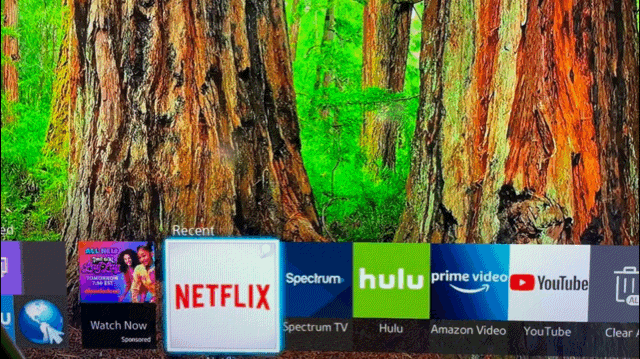Viewership and advertising dollars have shifted from traditional to connected TV (CTV). Viewers are now using a variety of over-the-top (OTT) services to watch their favorite TV shows and movies – getting away from traditional TV providers.
Marketers consistently search for the best approach to reach their target audience as the lines between traditional and digital video consumption blur. Thus, forcing advertisers to choose between leveraging traditional TV audiences and storytelling expertise, or leveraging digital video’s targeting precision and impeccable tracking capabilities. Advertisers can enjoy both with connected TV advertising!
Marketers can use CTV to combine the impact of linear TV commercials with the precision of digital advertising.
What is Connected TV?
CTV refers to internet-connected devices that allow viewers to stream videos and music and browse the web. All CTVs allow viewers to watch streaming content via apps such as Amazon Prime Video. It leverages digital aspects such as data targeting, audience behavioral differences, varying personas, and so on before targeting people through television using digital capabilities. Since audiences watch their favorite shows on various devices and services, brands must consider connecting with them where they are watching.

What is Connected TV Advertising?
Connected TV advertising (or SmartTV) are ads that can be placed on any TV or device that can connect to the internet and access video streaming content beyond what is available through a cable provider’s standard offering. Ads purchased programmatically and shown on consoles, computer/mobile streaming, gaming devices, over-the-top (OTT), or Smart TVs are examples of CTV. There are three types of platforms in the connected TV advertising industry: Demand-Side Platforms (DSPs), Supply-Side Platforms (SSPs), and Data Management Platforms (DMPs).
DSPs help coordinate the buying side of the CTV ad business by providing access to publishers’ video content inventory. The DSP’s role here is to summarize and optimize impressions so buyers can automatically purchase them.
SSPs are the operators of sellers. Publishers act as content owners in this transaction, creating spots for future ads and placing associated listings on an SSP. Publishers can also sell their inventory on exchange platforms. Deals are closed through automatic auctions to expedite the process. Algorithms match up buying requests and selling offers and close the matching pairs.
In this ad tech circulation, DMPs act as technical intermediaries. The primary functions here are to collect targeting parameters for specific offers. Ad buyers can change their buying criteria, such as user interest, location, or demographics. The DMP then forwards these requests to the DSP, and the auction begins.
How Does Connected TV (CTV) Work?
CTV advertising generally works the same way as other digital advertising, with ads sold and bought via auction. The media buying ecosystem has several levels of auctions, each with its price and access parameters. Transactions for connected TV advertising are frequently conducted on an invite-only private marketplace (PMP), which exists one level above the open ad marketplace.
The PMP’s rare air often comes at a high minimum CPM price, though this is not always the case. The value of a PMP is that it gives you access to inventory and creative formats you may not easily access in an open auction. It also has fewer bidders, which leads to higher win rates. Ad purchases in connected TV advertising are not based on air times or channels. Instead, connected TV ads are delivered one at a time to each viewer while they are watching a program. The advantage of this particular approach is you don’t have to guess which shows your target audiences are watching. Instead, you can create a target audience based on demographic and behavioral signals and then serve advertisements to specific viewers.
Think of streaming services such as Netflix. Most of them make money from paid monthly subscriptions to their video libraries. On the other hand, some CTV/OTT services prefer to monetize their content in part or entirely by selling ad spots to advertisers.
Types of CTV Ads
The 3 types of CTV ads that dominate the market include:
- Home Screen Placement Ads:
These advertisements appear on the home screen of specific OTT services. Users can frequently click on them to obtain additional product information. - In-stream Video Ads:
These are video ads that are integrated into the video content that is being streamed. The majority are either fifteen or thirty seconds long. They function as non-skippable commercial breaks, creating a user experience similar to linear TV. - Pre-roll ads:
These are advertisements that appear before the viewer’s chosen content. These advertisements may contain links to websites and retailers. Pre-roll ads appear on ad-supported OTT TV services before longer content, such as a movie.
Connected TV (CTV) Advertising Trends.
Advertisers can no longer ignore CTV’s potential and vividly follow their younger audiences to new platforms as it becomes the “MVP of all TVs.” Through this, they are expanding their marketing budgets for CTV. According to MAGNA, US CTV advertisers will increase their ad spend by 28.4% in 2022, reaching about $7 billion.
Another interesting CTV trend is that, although CTV ads are long and unskippable, viewers tolerate them better than on other digital platforms or traditional TV. Research shows that almost an astonishing 60% of users don’t mind watching commercials if they get their content for free. Simultaneously, CTV ads attract more attention, with up to 95% completion rates. It is partly due to the inability to skip them in most cases, but it does not negate increased engagement and brand awareness.
Final Thoughts
CTV advertising meets viewers where they are and builds brand awareness as they watch their favorite shows. The accessibility and ease of use of connected TV advertising make it essential to include it in any comprehensive digital video strategy.

